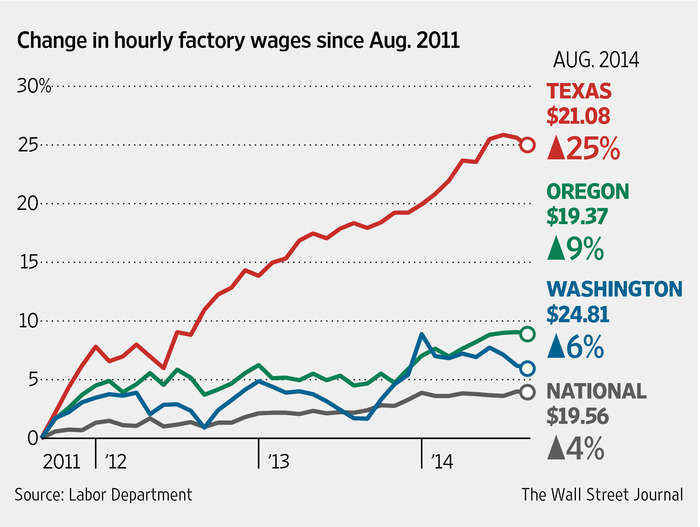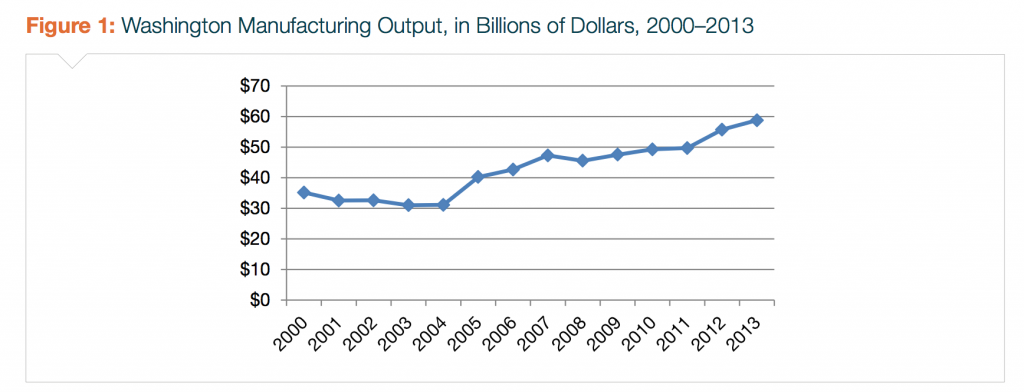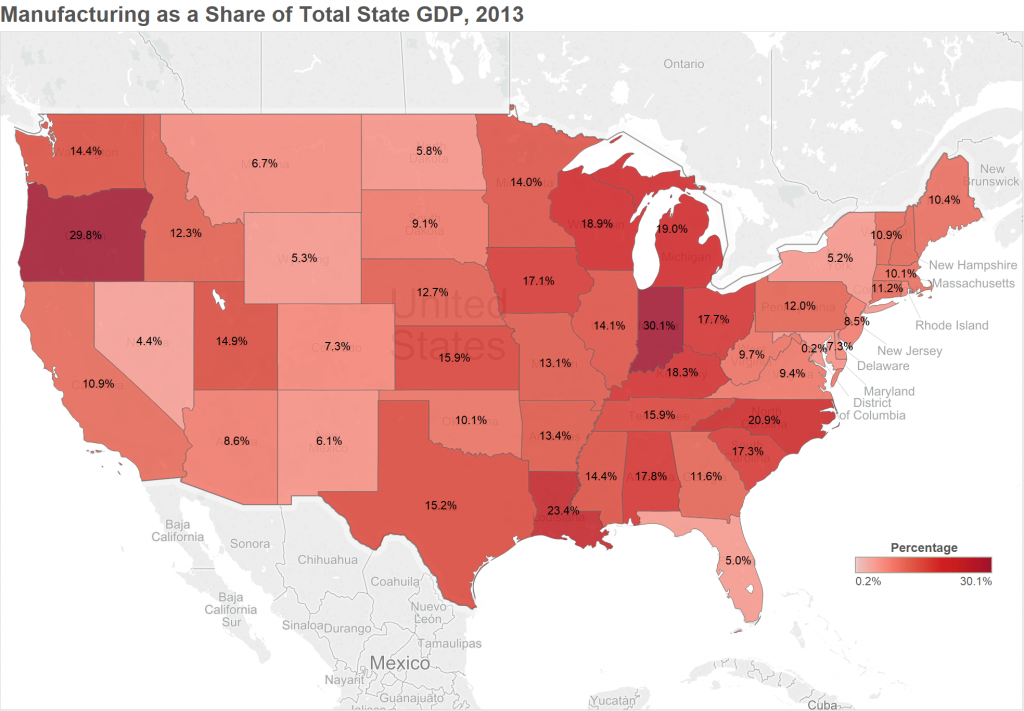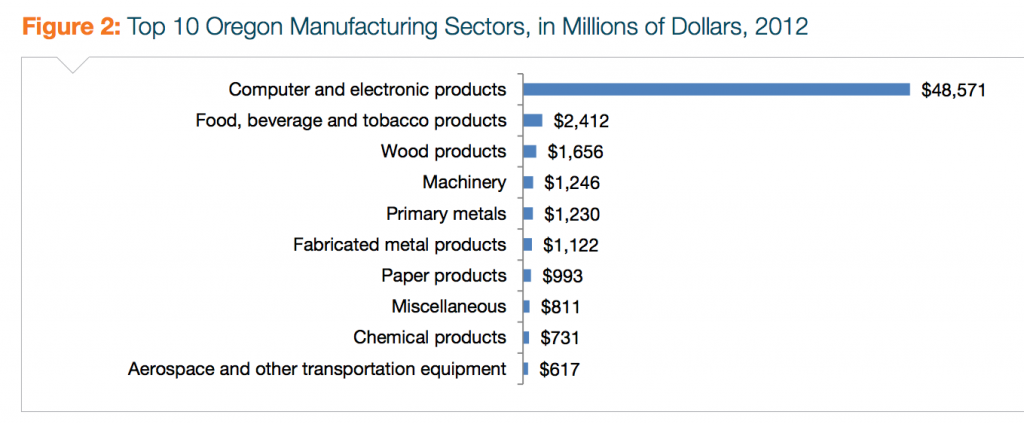Manufacturing is one of the U.S. economy’s most dynamic sectors. Around 2/3 of private sector R&D spending comes from manufacturing firms. Additionally, manufacturing has the highest “multiplier effect” of any major sector. A multiplier effect is an economic concept in which an increase in spending spills over into other sectors, creating a GDP increase greater than the initial amount spent. For example, if a firm builds a production plant, it will employ construction workers and their suppliers as well as those who work in the factory. Indirectly, the new factory will stimulate employment in suppliers and service industries in the factory’s vicinity.
What’s more, manufacturing jobs pay high wages. The U.S. “wage premium” for non-college-educated workers—the amount that the average wage in manufacturing exceeds wages in nonmanufacturing industries was $1.78 per hour (or 10.9 percent) in 2012–2013. Washington State has the 10th highest wage premium for manufacturing workers without a college degree ($3.13 per hour, 17.6 percent).
An energetic manufacturing sector is also essential to meeting broader challenges, including rebuilding infrastructure, reducing greenhouse gas emissions, and achieving energy independence.
So with this in mind, let’s review some of the most current data on Washington State’s manufacturing sector.
Manufacturing employment declined across peninsula & Snohomish County
2014 was a year of overall job growth for Washington State manufacturing, but the growth was not evenly shared statewide. Manufacturing employment contracted in many counties, especially across the peninsula region. Clark, Grant, and King County added hundreds of jobs each in the manufacturing sector. King County had the biggest net job gains (+811).
Snohomish County suffered a significant net loss of manufacturing jobs (-1,314). The county ranked #9 in the whole United States for manufacturing net job loss.
Boeing layoffs played a significant role in the Snoho decline.
Manufacturing jobs can pay excellent wages.
The average manufacturing job pays about $20,000 more per year than the average service industry job.
Quickly disappearing is the old school notion of manufacturing as dead end drudgery. In today’s economy, manufacturing is increasingly highly skilled, technology intensive, and well compensated. Overall, newly hired and already employed manufacturing workers were making 25 percent more than the workforce as a whole (according to the US Dept. of Commerce Economics & Statistics Administration).
 Washington ranks 6th in the US for manufacturing wages. Manufacturing employees in Washington State earned $87,756 per year, over ten thousand dollars more than the national average.
Washington ranks 6th in the US for manufacturing wages. Manufacturing employees in Washington State earned $87,756 per year, over ten thousand dollars more than the national average.
Amid the skills gap, manufacturing wages have been rising in Washington State in recent years.
Washington State manufacturing is growing.
There’s been a lot of buzz in recent years about a renaissance in US manufacturing. But the growth of manufacturing employment has been even stronger in Washington State than the nation as a whole.
Between 2011 and 2015, employment in manufacturing grew by 6.3 percent across Washington State– four straight years of industrial growth. The job boom was especially large in Seattle, where manufacturing jobs grew by 14 percent (almost three times that national average).

- Growth in Manufacturing Employment, 1980-2013
Oregon: manufacturing success story.
Oregon has experienced a mini manufacturing boom over the last year. Oregon’s manufacturing sector has grown eightfold since 1997. Computer circuits and processors are behind the big surge, with companies like Intel leading the way.

